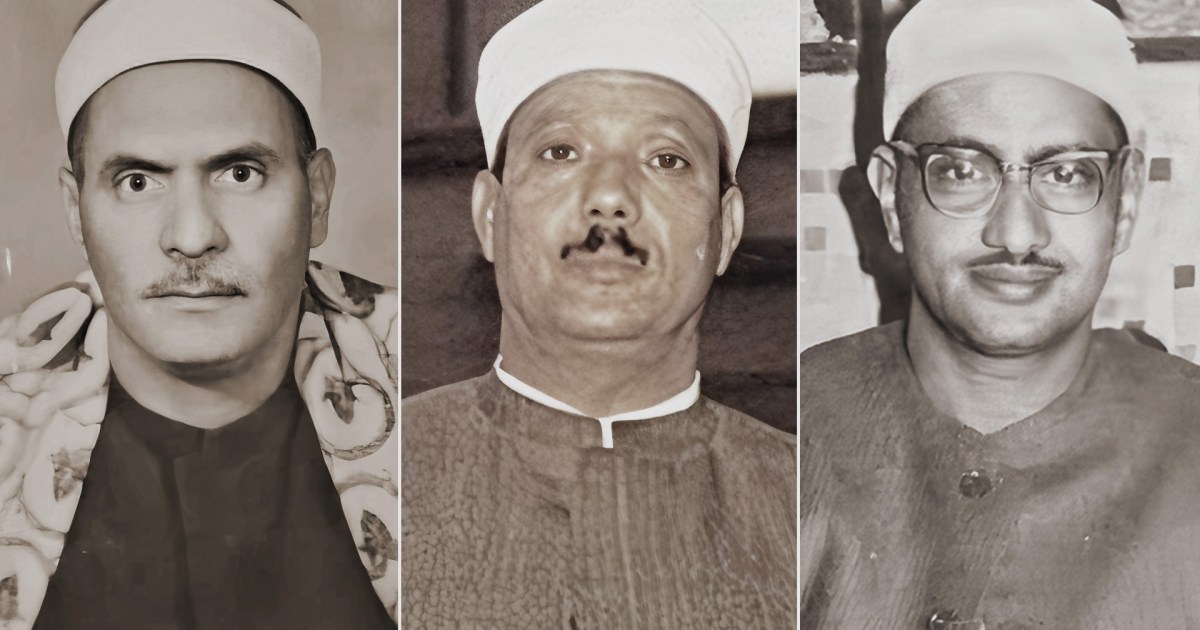For many decades, the art of reciting the Qur’an has been associated with the name of the famous Egyptian reciters who were distinguished by outstanding features and sweet voices, and by their performance they formed distinctive features of the Egyptian school of recitation, and became required for reading and chanting throughout the entire Islamic world.
Egyptian recitation has always been characterized by characteristics that made it enjoy that great prestige. In addition to the sweet and melodious voices that Egypt gave to the Islamic world, the Egyptian recitation was distinguished by the accuracy of the provisions of intonation, the singing of the Qur’an according to the Arabic melodies, and the proficiency in many readings with its provisions.
This reputation was not only made with beautiful voices, but also with good performance, smooth transitions between maqams, and strict rules for recognizing the merit of the holder of the title of "Quran Reader on Egyptian Radio".
The Egyptian School.. Rising from a calm breeze to the peak
Since the establishment of the Egyptian Radio in 1937, and the launch of its first broadcast in the voice of the reciter Mohamed Refaat, semi-established rules have been established for dealing with musical maqam and arranging them in recitation.
The initiation with Maqam al-Bayati became an unchanging rule, then came al-Saba or Hejaz, then Nahawand, then Rast, or Sikah, then Ajam or Jahargah, then returning to al-Bayati in preparation for the conclusion.
This arrangement was predominant, and it may differ by giving precedence to another, but it is established that the initiation is in the position of al-Bayati, while it resembles the ascent from a calm breeze to the peak of recitation with strength.
With the forties of the last century, Sheikh Mustafa Ismail established this arrangement, as well as setting a rule according to the satisfaction of the place, and access to his answer before moving to another, which contributed to making the Egyptian recitation a school with a coherent structure, and gave it a framework that strengthens its structure.
If he is not a reader, he is a worshiper
While it is narrated from the late Sheikh Nasr al-Din Tobar, that he submitted to the tests of the reciters of the Noble Qur’an on the Egyptian radio 5 times in a row, and failed to join them, until he succeeded the last time, but a vocalist and a chant, at a time when the reciters of the Qur’an affiliated with the radio were famous great figures: Sheikh Mustafa Ismail, Abdel Fattah Al Shashai, Abdel Basset Abdel Samad, Abu Al-Enein Shoaisha, Muhammad Siddiq Al-Minshawi, Mahmoud Khalil Al-Hosari, Kamel Youssef Al-Bahimi, Mahmoud Ali Al-Banna.
The radio admission committee consisted of two sections, one related to the provisions of recitation, intonation and memorization, and another section related to the sweetness of the voice, and the ability to move between its usual stations.
It consisted of the poet Mahmoud Hassan Ismail, the composer and musician Muhammad Hassan al-Shujai who was very strict.
During al-Shuja’i’s era, the radio refused to accept a number of beautiful voices and register them as reciters of the Holy Qur’an, including Tobar and Sayed al-Naqshbandi, while Sheikh Muhammad Mahmoud al-Tablawi took 10 years to accept and raise his voice through the ether.
The radio also did not accept Sheikh Muhammad Imran until his death, and of course no one can blame the latter for his voice or the provisions of his intonation, but his method of recitation, his leaps from one sentence to another quickly, his frequent use of stairs up and down, and his resort to a lot of tonal sequence made his recitation closer to singing. Religious or beyond the commitment to the Egyptian school in recitation.
revolution against the rules
In the eighties, coinciding with the time of the cassette, some new readers began violating the rules of the Egyptian school, either by moving quickly between the shrines, or not diversifying in them, like the old readers, and then these became the stars of the recitation arena, inside and outside Egypt.
With the advent of the new millennium, the era of satellite channels and some channels specialized in broadcasting the Noble Qur’an, and the school that prefers to stay away from the melodic sequence or the melodic and the reading maqamat, including the reciter Mishary Rashid Al-Afasy, Abdul Rahman Al-Sudais and Ahmed Al-Ajmi, a new generation of young readers has emerged that is far from the rules The Egyptian recitation school, they were closer to the reciters of the eighties, such as El-Shahat Anwar, Sayed Metwally and Abdel-Wahhab El-Tantawy.
Instead of a stable arrangement of the maqamat, the reader began to recite a minute or two of the maqam al-Bayati, then jump from it to the maqam al-Rasit, or the Nahawand, or even to higher levels of it.
Is a nice voice enough?
The Arab region was not devoid of melodious, sweet voices, and committed performance, including El-Shahat Anwar (Egypt), Yunus Aswelis (Morocco) and the young man, Al-Zein Muhammad Ahmed (Sudan), but there are notes on the use of Quranic melodious maqams, as you may find in them some beauty in reciting certain verses on The account of other verses, but the idea of an integrated structure is absent from them.
Some of them may be beautiful in themselves, but the complete picture of the recitation of the surahs may appeal to the listener and pay attention or praise the Sheikh’s ability to reach a specific station or move from one station to another, but when he wants to reflect, meditate and realize the aesthetics of the Qur’anic text and its meanings, he may find his goal with the great teachers.

